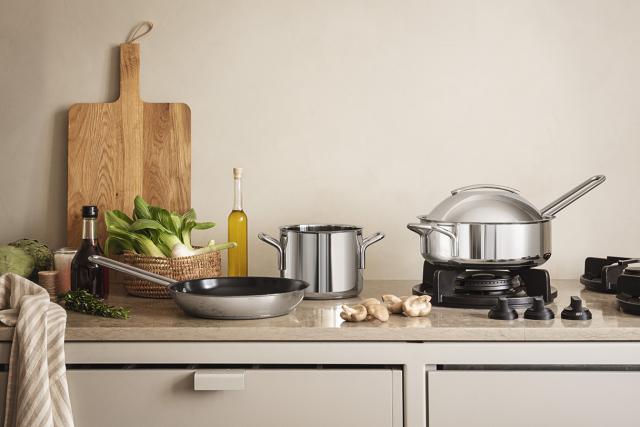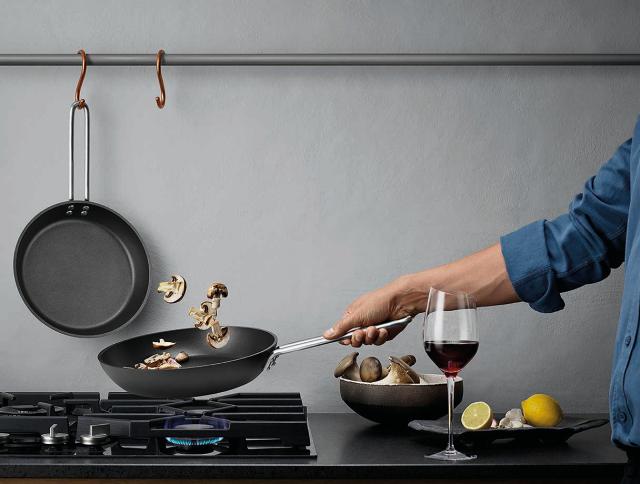The story behind the iconic Fridge carafe: a milk bottle in a wetsuit
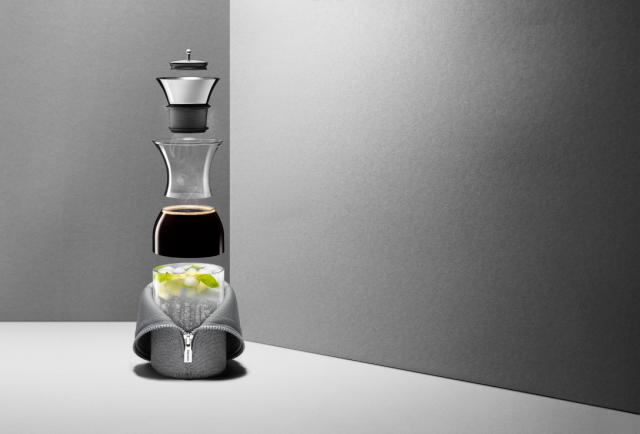
The Fridge carafe is without a doubt a feast for the eyes, but have you ever wondered what’s behind its handsome looks? This seemingly simple water bottle embodies a raft of innovative and functional solutions that have made it an indispensible element in homes worldwide. Join an insightful journey to explore the fascinating design process behind the Fridge carafe.
In 2007, when the Eva Solo design team launched the first Fridge carafe, we couldn’t have dreamt of the extraordinary and lasting popularity it would go on to achieve. We were perhaps more worried about the reaction to a carafe clad in what might look like an overcoat.
But today, more than 2.5 million Fridge carafes have been sold. It has also won international design awards. With its distinctive silhouette and characteristic jacket, the Eva Solo carafe is gaining the status of a true Danish design icon. We’re not shy of making that claim, because we know that its beautiful shape and innovative, solutionist design has helped set a new, higher standard in its field.
Which is why it seems right to share the inside story of how the distinctive Fridge carafe came about.
Practical problems
Successful designs are often conceived as solutions to practical problems – the story of the Eva Solo Fridge carafe being no exception. There was a time when carafes that could stand in a fridge door shelf were hard come by, and even if they did fit, it was typically at the expense of their looks or functionality.
In short, carafes in those days were either unattractive or impractical – the main problems being the dripping lid that required manual opening, or condensation forming on the exterior, which inevitably trickled down the side, leaving water marks on the dining table.
What was needed was a carafe that was beautiful, practical and sized to fit a fridge door. Claus Jensen and Henrik Holbæk of Tools Design readily took up the challenge. For decades, this design duo has been creating award-winning projects that time and time again superbly unite aesthetics, functionality and innovation, and with a track record of more than 350 design awards, they are regarded as ranking among Denmark’s most eminent design studios.
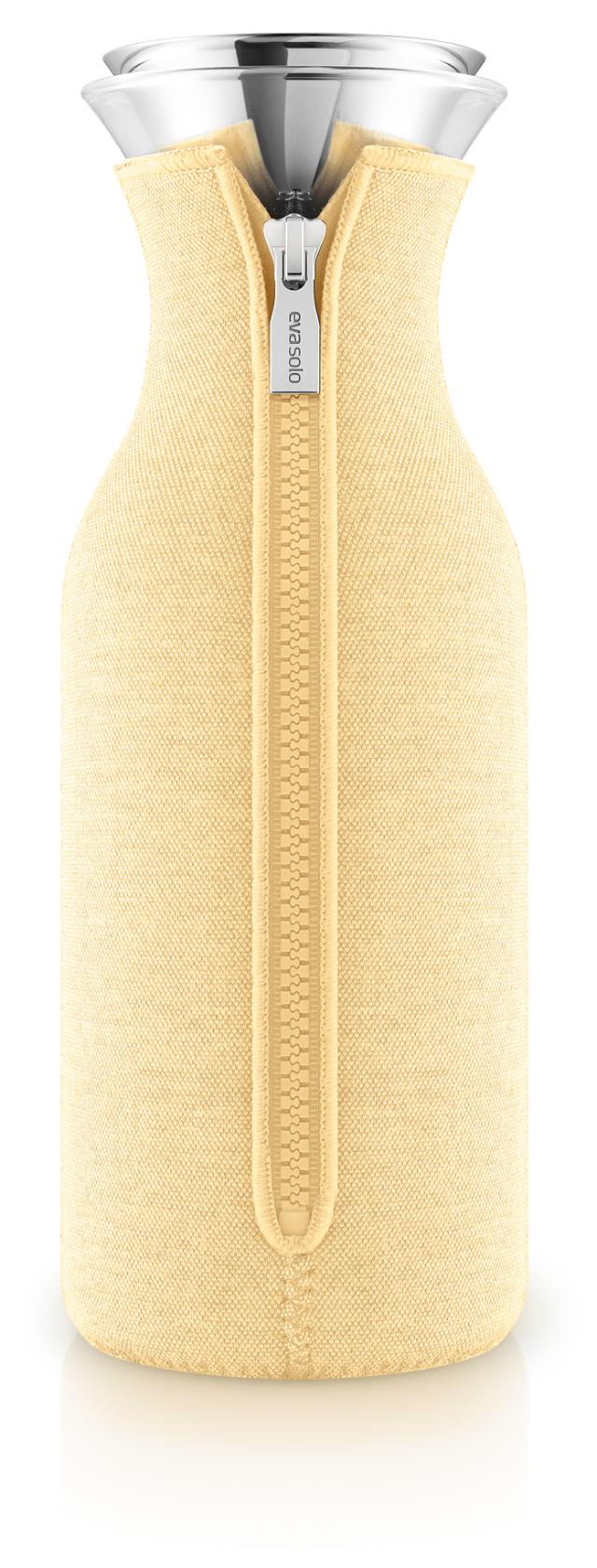
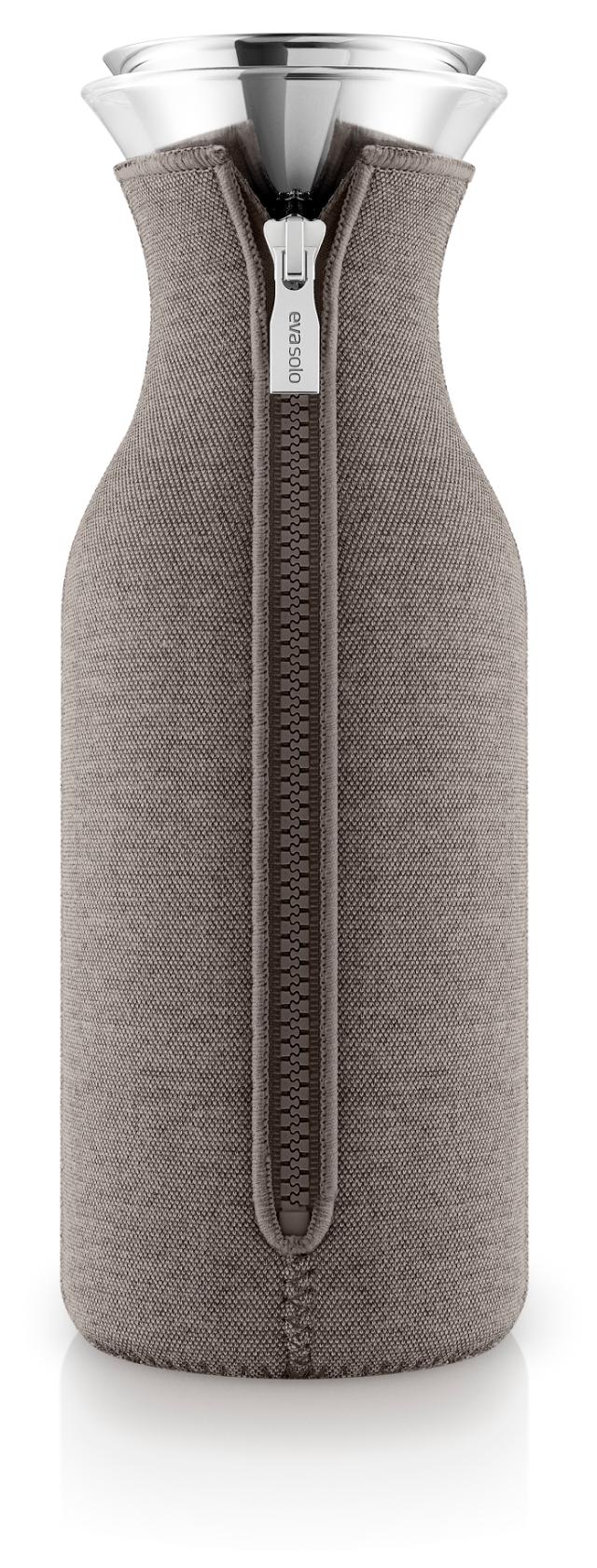
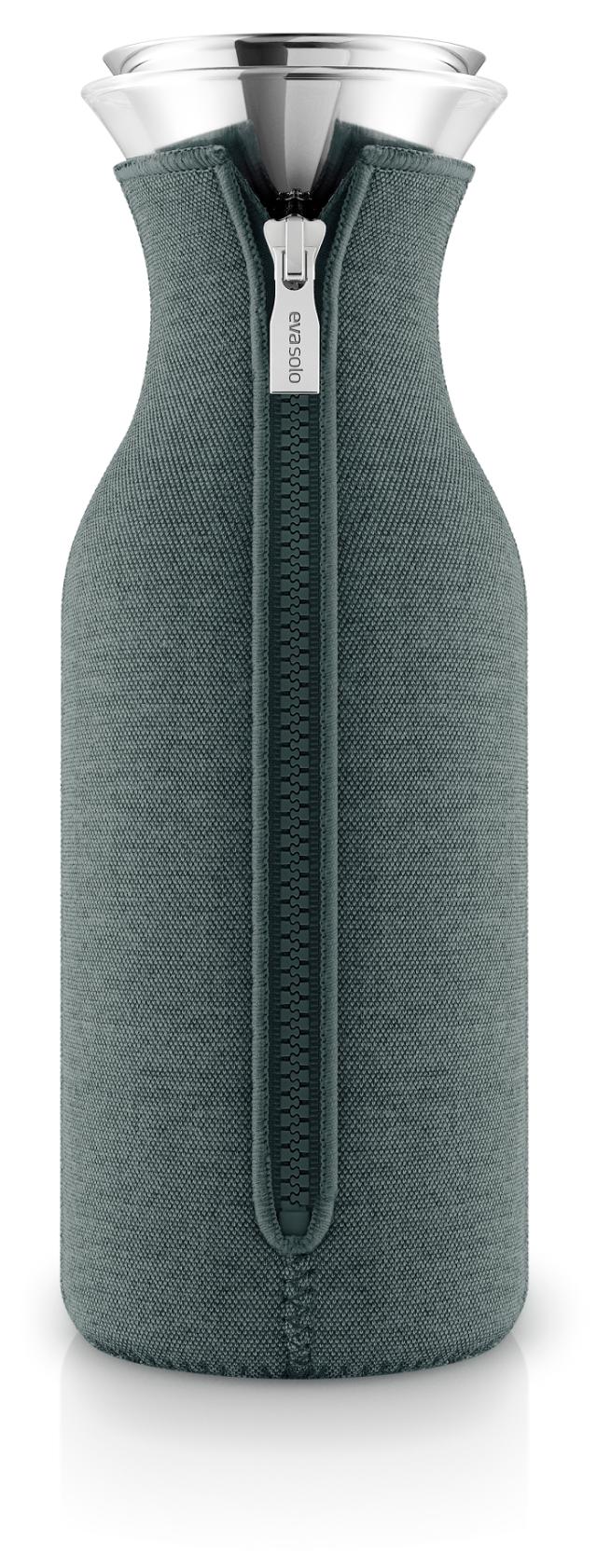
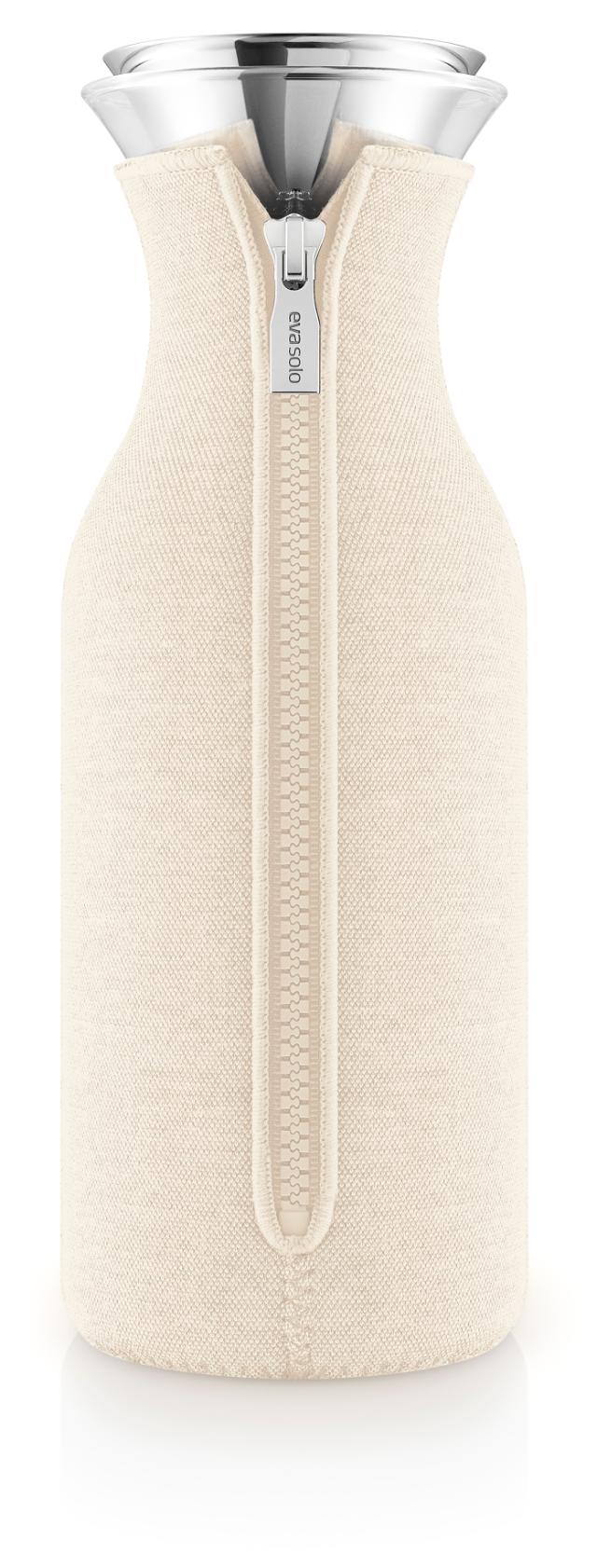
Inspired by heritage
The duo drew inspiration for the shape of the carafe from Danish household heritage: the glass milk bottle that had been a permanent fixture in Danish fridges until it was replaced by the cardboard carton in the 1970s. Based on this familiar and nostalgic shape, Jensen & Holbæk modelled the cylindrical, sculptural glass bottle with its narrowing at the neck to ensure that the index finger and thumb rest intuitively and comfortably in the contour.
The wide opening of the carafe also permits various ingredients to be popped into the water to impart flavour, such as fresh lemon slices or orange wedges, sprigs of rosemary or mint leaves to give ordinary tap water a refreshing or even daring twist. Moreover, the carafe is made of borosilicate glass, a material renowned for its durability and thermal shock resistance. This makes it ideal for both chilled and hot beverages.
As a culmination to the modelling, the base of the Fridge carafe was created to mimic the ripples formed on still water when a single droplet breaks the surface. This distinctive and intriguing design facet serves as a subtle and poetic tribute to the product’s primary purpose – to hold liquid.
Automatic lid and drip-free pouring lip
Having shaped the elegant lines of the carafe, the design duo then turned their attention to the lid. In order to protect the contents of the carafe against airborne particles such as dust and dirt, a sealed lid was needed. This would also prevent any “fridge flavour” from seeping in. The design of the lid also had to permit one-handed operation of the carafe so the other hand could hold a drinking glass.
The ideal solution turned out to be a flip lid that opens automatically when the carafe is tilted for pouring. The lid permits one-handed operation, remains sealed when not in use, and ensures that ice cubes and fruit pieces do not tumble out during pouring.
With this functionality in place, Jensen & Holbæk had to ensure that the lid and the pouring lip were drip-free. This requirement resulted in one of the carafe’s most significant innovations: the drip-free pouring lip.
Without going into the science of surface tension and hydrophobic properties, the design engineering behind the guaranteed drip-free pouring lip relies on the specific angle and shape of the pouring lip combined with the stainless steel. The combination of these minimises the tendency of the liquid to cling to the rim and trickle down the side of the carafe. Instead, the liquid is directed so as to fall straight down into the drinkware. Even if an insistent droplet does stick to the rim, it is “trapped” by the narrow gap between the carafe’s glass body and pouring lip so that it runs down when tilted for pouring the next time.
Smart suit
The last task was to ensure that the carafe left no water marks and stains on tables and other surfaces. The solution was the iconic “suit”.
Available in woven and neoprene, the suit is actually more than a visually intriguing element adding a soft, appealing tactility to the carafe because it also helps to stabilise the temperature of the carafe contents, while also absorbing condensation to prevent it staining tables.
The Fridge carafe was born out of our quest to solve a very specific problem: how could we conserve drinks in the fridge in a way that was both stylish and practical?
The result was far more than standard kitchenware; the carafe became proof of a well-thought-out, tried-and-tested design studio’s flair for developing products that exquisitely unite form and function to enhance those everyday moments. With its tangible, tactile qualities and ability to enhance and renew daily routines, the Eva Solo Fridge carafe has earned a deserving place in design history and in many homes worldwide.
.jpg&width=640&format=webp)



.jpg&width=640&format=webp)

.jpg&width=640&format=webp)
.jpg&width=640&format=webp)
